- Achieve Success in Beetroot Harvesting with This Method!
- Introduction
- The Two-Week Head Start Method
- Conclusion
- Start Preparing Your Soil Ahead
- Choose the Right Beetroot Variety
- Growth Speed
- Size
- Color
- Disease Resistance
- Optimize Sunlight Exposure
- 1. Location Selection
- 2. Proper Spacing
- 3. Garden Layout
- 4. Provide Support
- 5. Monitor and Adjust
- Maintain Adequate Soil Moisture Levels
- Implement Proper Thinning Techniques
- Why Thinning is Important
- When to Thin
- Thinning Techniques
- Thinning Guidelines
- Additional Tips
- Apply Fertilizers at the Right Time
- 1. Pre-Plant Application
- 2. Side-Dressing Application
- 3. Midseason Application
- 4. Foliar Application
- 5. Timing Considerations
- Monitor and Control Pests and Diseases
- Pest Monitoring
- Biological Control
- Chemical Control
- Disease Prevention
- Conclusion
- Harvest Your Beetroot at the Optimal Time
- 1. Check the size
- 2. Monitor the color
- 3. Check the tops
- 4. Perform a taste test
- 5. Use a garden fork
- 6. Store properly
- “Question-Answer”
- Why is a two-week head start important for beetroot harvesting?
- What is the proven method to achieve a two-week head start on beetroot harvesting?
- Can any type of soil be used for beetroot cultivation using this method?
- How does raised beds and black plastic mulch help in achieving a two-week head start on beetroot harvesting?
- Are there any other benefits of using raised beds and black plastic mulch for beetroot cultivation?
- Is the two-week head start method suitable for commercial beetroot farming?
- “Video” How to prepare, cook and cut Beetroot – French cooking techniques
Are you looking to maximize your beetroot harvest and get a head start on the growing season? Look no further! We have the perfect method that will give you a two-week jump on harvesting your beetroot.
Introducing the Early Planting Technique: This tried and tested method involves planting your beetroot seeds earlier than usual to take advantage of the cooler spring weather. By planting your beetroot seeds two weeks before the last frost date, you can give your plants a head start and extend your harvesting season.
How does it work? By planting your beetroot seeds early, you allow them to establish strong root systems before the summer heat sets in. This results in healthier plants that can withstand stressors such as drought and pests, ensuring a bountiful harvest.
Pro tip: Before planting, make sure to prepare your soil by adding organic matter and ensuring proper drainage. This will create the optimal growing conditions for your beetroot plants.
Not only will the Early Planting Technique give you a head start on harvesting, but it will also allow you to enjoy your beetroot sooner. Imagine having fresh, homegrown beetroots on your dinner plate while your neighbors are still waiting for theirs to grow!
So why wait? Start implementing the Early Planting Technique today and enjoy an abundance of beetroot that will make your friends and family jealous!
Remember, the early bird catches the beetroot.
Achieve Success in Beetroot Harvesting with This Method!
Introduction
Beetroot harvesting can be a challenging task, especially if you want to achieve maximum yield in a short period of time. However, with the right method, you can achieve great success and harvest your beetroot crop efficiently. In this article, we will introduce you to a proven method that will give you a two-week head start on your beetroot harvesting.
The Two-Week Head Start Method
The two-week head start method is a tried and tested approach that can significantly improve your beetroot harvest. Follow these steps to achieve success:
- Proper Soil Preparation: Start by preparing your soil well in advance. Ensure it is fertile and free from weeds. Beetroot prefers a slightly acidic soil pH, so consider adjusting the pH if necessary.
- Planting Seeds: Plant your beetroot seeds in rows, spacing them according to the variety you are growing. Take into account the recommended distance between plants to allow them enough room to grow.
- Watering: Beetroot requires regular watering to maintain consistent moisture levels in the soil. Keep the soil evenly moist, but be careful not to overwater, as it can lead to rotting. Use a drip irrigation system if possible.
- Weed Control: Keep your beetroot beds free from weeds, as they can compete with the plants for nutrients and water. Regularly weed the area around the beetroots to ensure their healthy growth.
- Fertilization: Apply a balanced fertilizer that is rich in nitrogen, phosphorus, and potassium to promote healthy beetroot growth. Follow the recommended dosage according to the fertilizer package instructions.
- Protection from Pests: Beetroot can be susceptible to pests such as aphids, leaf miners, and flea beetles. Take preventive measures such as using insecticidal soap or organic pesticides to protect your crop.
- Harvesting: Monitor your beetroot plants regularly for maturity. They are typically ready for harvest around 55-70 days after planting, depending on the variety. Gently pull the beetroots out of the soil, being careful not to damage them.
Conclusion
By following this proven method, you can achieve great success in beetroot harvesting and enjoy a two-week head start on your crop. Remember to properly prepare the soil, plant the seeds correctly, provide adequate watering and fertilization, protect your crop from pests, and harvest at the right time. With a little patience and diligence, you will have a bountiful beetroot harvest!
Start Preparing Your Soil Ahead
Before planting beetroot, it is crucial to prepare your soil properly. The quality of the soil directly affects the growth and yield of your beetroot plants, so taking the time to prepare it ahead will significantly improve your chances of a successful harvest.
Here are some steps to prepare your soil for beetroot:
- Choose the right location: Beetroot prefers well-draining soil in a sunny spot. Select a location in your garden that receives at least 6 hours of direct sunlight per day.
- Clear the area: Remove any weeds, rocks, or debris from the planting area. These can hinder the growth of your beetroot plants.
- Loosen the soil: Use a garden fork or a tiller to loosen the soil to a depth of about 8 inches. This will help the beetroot roots penetrate easily and allow for proper water drainage.
- Amend the soil: Test your soil’s pH level to determine if any adjustments are necessary. Beetroot prefers slightly acidic soil with a pH range of 6.0 to 7.0. If the pH is off, you can amend it by adding organic matter like compost or peat moss.
- Add nutrients: Beetroot plants require certain nutrients for healthy growth. Before planting, add well-balanced organic fertilizer or compost to the soil to provide these essential nutrients.
- Ensure proper drainage: Beetroot does not tolerate waterlogged conditions. If your soil has poor drainage, consider using raised beds or adding organic matter like sand or perlite to improve drainage.
By following these soil preparation steps ahead of time, you’ll give your beetroot plants a strong foundation for optimal growth. Remember to monitor the moisture levels, provide adequate water, and maintain weed control throughout the growing season.
Choose the Right Beetroot Variety
When it comes to beetroot harvesting, choosing the right variety is crucial for a successful and efficient process. Different beetroot varieties have different characteristics, such as size, color, and growth speed. Here are some factors to consider when selecting the right beetroot variety:
Growth Speed

Depending on your desired harvest timeline, you can choose between fast-growing or slow-growing beetroot varieties. Fast-growing varieties can be harvested in as little as 50 to 60 days, while slow-growing varieties may take up to 90 days or more. Consider the amount of time you have available and plan accordingly.
Size
Beetroot varieties come in different sizes, such as small, medium, or large. The size of the beetroot can affect its taste and texture. Smaller beetroot tends to be sweeter and more tender, while larger beetroot can be slightly tougher. Consider your preference and the intended use of the beetroot when selecting the size of the variety.
Color
Beetroot varieties can come in a range of colors, including deep red, pink, yellow, and even white. The color of the beetroot can add visual appeal to your harvest and make your dishes more colorful and vibrant. Choose a variety that suits your aesthetic preferences and culinary needs.
Disease Resistance
Some beetroot varieties are more resistant to certain diseases and pests. Research different varieties to find out which ones are known to have higher levels of disease resistance. This can help reduce the risk of crop loss and ensure a healthier harvest.
By carefully considering these factors and selecting the right beetroot variety, you can achieve a successful and rewarding harvest. Take your time to research different varieties, read reviews, and consult with local gardening experts to make an informed decision. Happy beetroot harvesting!
Optimize Sunlight Exposure
One crucial factor in achieving a two-week head start on beetroot harvesting is optimizing sunlight exposure. Beetroot plants require a significant amount of sunlight to grow and develop properly. By maximizing their access to sunlight, you can encourage faster growth and ultimately harvest your beetroots earlier.
1. Location Selection
Choose a location for your beetroot plants that receives full sunlight for at least six to eight hours a day. Avoid areas with excessive shade or obstructive structures such as trees or buildings.
2. Proper Spacing
Ensure adequate spacing between beetroot plants. Overcrowding can result in shading and reduced sunlight exposure for the plants. Follow the recommended spacing guidelines provided on the seed packet or consult a local gardening expert for advice.
3. Garden Layout
Create a garden layout that maximizes sunlight exposure for all your beetroot plants. Consider the angle of the sun throughout the day and arrange your plants in a way that minimizes shading. Rows should run north to south, with taller plants positioned towards the north to prevent shading on smaller plants.
4. Provide Support
When beetroot plants start growing, they may develop large leaves that can overshadow nearby plants. Use stakes or trellises to provide support and keep the foliage upright, preventing large leaves from blocking sunlight to the beetroots.
5. Monitor and Adjust
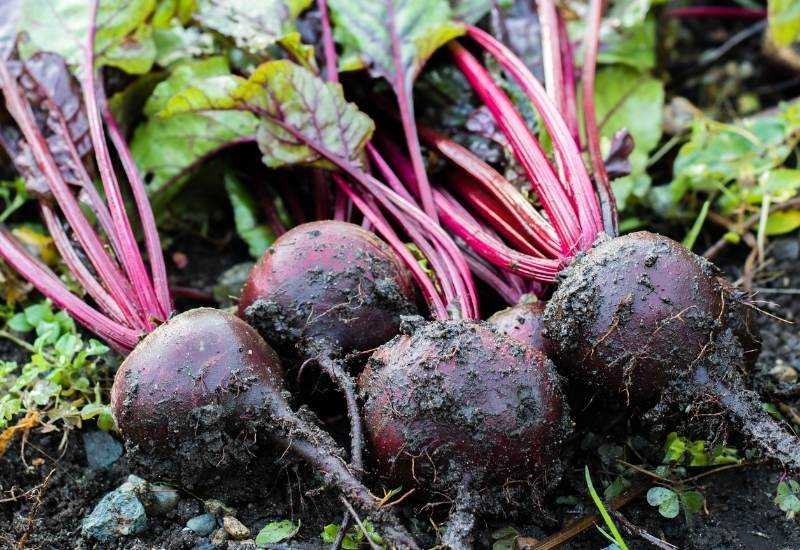
Regularly monitor your beetroot plants’ sunlight exposure. Observe if any new structures or trees are casting shade on your plants and make necessary adjustments, such as pruning or relocating the plants if needed.
By optimizing sunlight exposure for your beetroot plants, you can give them the best chance to thrive and achieve a two-week head start on harvesting. This method will ensure your beetroots receive ample sunlight, promoting faster growth and earlier harvests.
Maintain Adequate Soil Moisture Levels
One of the key factors in achieving a successful beetroot harvest is maintaining adequate soil moisture levels. Beetroot plants require constant moisture throughout their growth cycle in order to develop properly and produce high-quality roots. Here are some tips to help you keep the soil moisture levels in check:
- Water regularly: Be sure to water your beetroot plants on a consistent basis. Aim to keep the soil moist but not overly saturated. Overwatering can lead to root rot and other diseases, so it’s important to find the right balance.
- Use mulch: Applying a layer of organic mulch around the base of your beetroot plants can help to retain moisture in the soil. Mulch acts as a barrier, reducing evaporation and keeping the roots cool and hydrated.
- Monitor soil moisture: Regularly check the moisture level of the soil by inserting your finger into the ground up to the first knuckle. If the soil feels dry, it’s time to water. If it feels too wet, you may need to adjust your watering schedule.
- Consider drip irrigation: Drip irrigation is a highly efficient method of watering that delivers water directly to the root zone of plants. This can help to minimize water loss through evaporation and ensure that the beetroot plants receive a steady supply of moisture.
- Avoid overhead watering: Watering from above can lead to excessive foliage moisture, which can promote the development of diseases. Instead, aim to water at the base of the plants, directing the water towards the roots.
By following these tips and maintaining adequate soil moisture levels, you can give your beetroot plants the best chance of thriving and produce a bountiful harvest.
Implement Proper Thinning Techniques
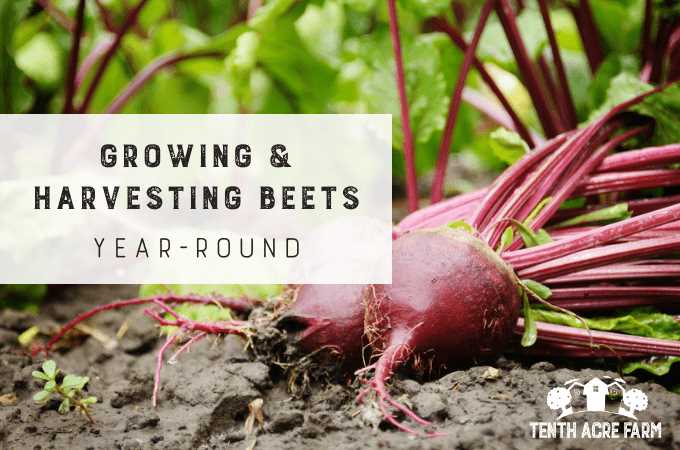
To achieve a two-week head start on beetroot harvesting, it is essential to implement proper thinning techniques. Thinning refers to the process of removing excess beetroot plants to create the ideal spacing for optimal growth and development.
Why Thinning is Important
Thinning is crucial for beetroot crops as it helps ensure that each plant has sufficient space to grow and access nutrients. By removing overcrowded plants, you allow the remaining ones to develop fully, resulting in healthier and larger beetroot.
When to Thin
The ideal time to thin beetroot plants is when they have grown to about two inches in height. At this stage, they are large enough to identify which plants should be removed and give the remaining ones ample space to thrive.
Thinning Techniques
There are several approaches you can take when thinning beetroot plants:
- Hand Thinning: This method involves carefully pulling out excess plants by hand, ensuring not to disturb the ones you wish to keep. It is time-consuming but allows for better control and precision.
- Snipping: Another option is to use scissors or pruners to cut off the unwanted plants at the soil level. This method works well when the plants are densely packed.
Thinning Guidelines
When thinning beetroot plants, consider the following guidelines:
- Leave the healthiest and strongest-looking plants with good root formation.
- Ensure that the remaining plants are at least three inches apart to allow for proper root development.
- Remove any damaged or diseased plants to prevent the spread of infection.
Additional Tips
Here are a few extra tips to optimize thinning:
- Gradual Thinning: If you are unsure about thinning too many plants at once, start by removing a few and gradually increase the thinning as the plants continue to grow.
- Utilize Thinned Beetroots: Don’t let the thinned plants go to waste! They can be used in salads or other dishes, providing you with an early harvest while improving the growth of the remaining plants.
By implementing proper thinning techniques, you can give your beetroot crops a significant advantage, allowing for a two-week head start on harvesting and ensuring healthy, vibrant beetroots.
Apply Fertilizers at the Right Time
Proper application of fertilizers is crucial for the successful growth and development of beetroot plants. By applying fertilizers at the right time, you can achieve a two-week head start on beetroot harvesting and maximize your yield.
1. Pre-Plant Application
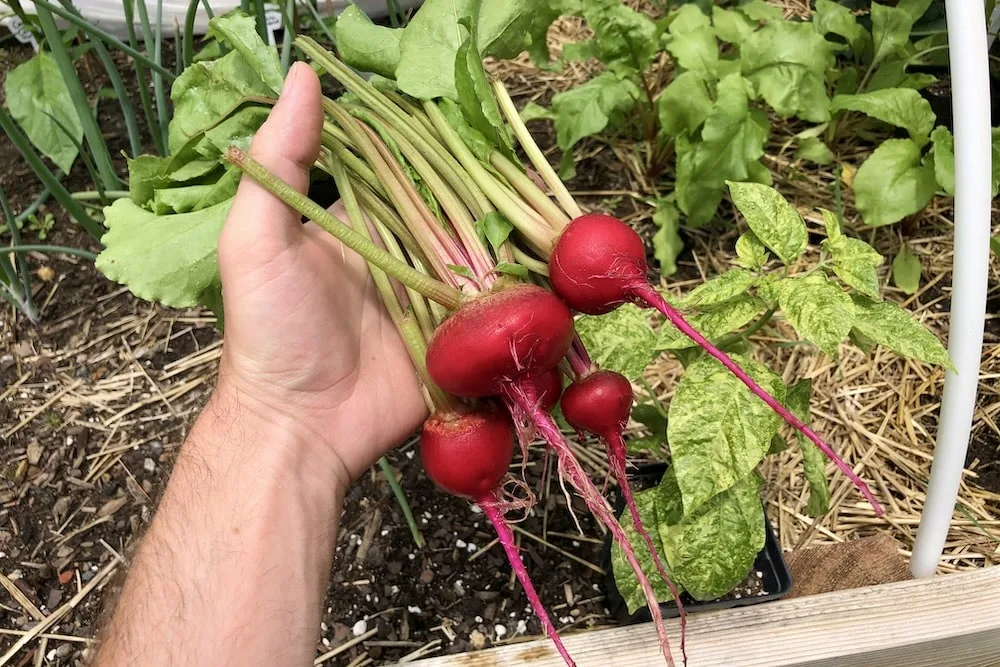
Before planting beetroot seeds, it is recommended to apply a balanced fertilizer, such as a 10-10-10 NPK (nitrogen, phosphorus, and potassium) blend. This will provide the necessary nutrients for the young plants to establish strong roots and healthy foliage.
2. Side-Dressing Application
Once the beetroot plants have reached the three-leaf stage, it is time for side-dressing application. Side-dressing involves applying fertilizers to the soil around the base of the plants. Use a nitrogen-rich fertilizer, such as ammonium nitrate or urea, to promote leaf and stem growth.
Tip: Avoid applying excessive amounts of nitrogen fertilizers, as this can lead to excessive foliage growth at the expense of root development.
3. Midseason Application
Approximately four to six weeks after planting, it is advisable to perform a midseason application of fertilizer. Use a balanced NPK fertilizer or a low-nitrogen, high-phosphorus blend to support root development and enhance the size and quality of the beetroot roots.
4. Foliar Application
In addition to soil application, foliar feeding can be done to supply nutrients directly to the beetroot plants through their leaves. Use a liquid fertilizer with a balanced nutrient composition and spray it onto the foliage, ensuring full coverage. This method can provide a quick nutrient boost during critical growth stages.
5. Timing Considerations
It is essential to consider the timing of fertilizer application. In general, fertilizers should be applied in the early morning or late afternoon when temperatures are cooler and the plants are less stressed. Avoid applying fertilizers during extreme heat or when rain is imminent, as this can lead to nutrient leaching or runoff.
Remember to always follow the manufacturer’s instructions for proper fertilizer application rates and timings. Regular monitoring of the beetroot plants’ nutrient requirements and adjustment of fertilization practices accordingly will ensure optimal growth and an early beetroot harvest.
Monitor and Control Pests and Diseases
One of the key challenges in beetroot farming is managing pests and diseases that can significantly impact the yield and quality of the crop. Implementing an effective monitoring and control strategy can help prevent and mitigate the damage caused by these threats.
Pest Monitoring
Regularly monitoring your beetroot plants for pest infestations is essential. Common pests that can affect beetroot include aphids, flea beetles, and slugs. Look for signs such as chewed leaves, wilting, or stunted growth.
You can use sticky traps placed near the plants to monitor flying pests like aphids and beetles. Inspect the traps regularly and count the number of insects caught to assess the severity of the infestation.
Biological Control
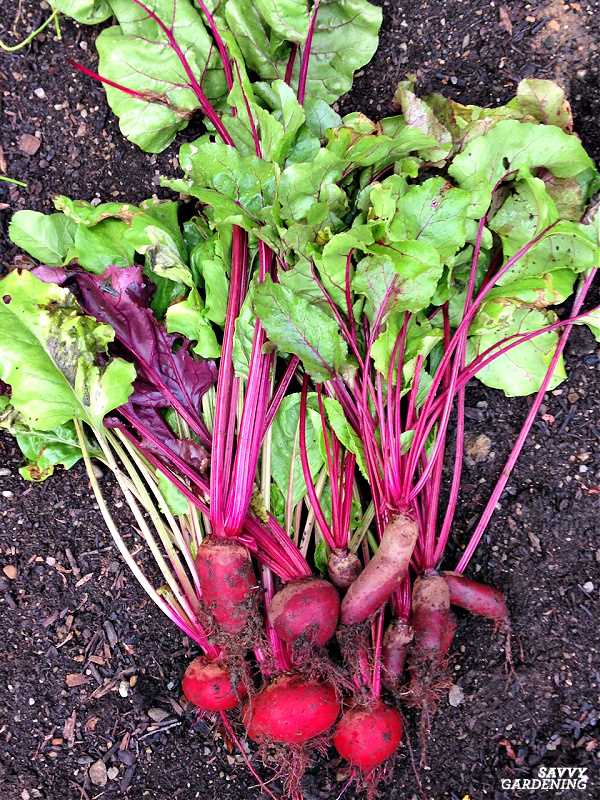
Consider using beneficial insects or organisms that prey on pests as a natural and environmentally friendly way to control pest populations in your beetroot field.
Ladybugs, lacewings, and parasitic wasps can be introduced to the field to prey on aphids and other insects. Nematodes can be used to control soil-dwelling pests like larvae of beetles or flies.
Chemical Control
In cases of severe pest infestations, chemical control methods may be necessary. Consult with a professional agricultural extension agent or local expert to identify the appropriate pesticides for your specific pest problem.
Always follow the manufacturer’s instructions when using pesticides, and take precautions to minimize their impact on the environment and beneficial insects.
Disease Prevention
In addition to pests, various diseases can affect beetroot plants, such as leaf spot, powdery mildew, and root rot. To prevent diseases, maintain good crop hygiene and implement cultural practices.
Rotate your beetroot crops with other vegetables to break disease cycles. Remove and destroy infected plant material to prevent the spread of diseases. Ensure proper spacing between plants to promote air circulation and reduce the risk of fungal infections.
Conclusion
By monitoring and controlling pests and diseases in your beetroot field, you can minimize crop damage and maximize your yield. A combination of pest monitoring, biological control, and, if necessary, chemical control can help you maintain healthy plants and achieve a successful beetroot harvest.
Harvest Your Beetroot at the Optimal Time
Knowing when to harvest your beetroot is crucial for getting the best flavor and texture. Here are some tips to help you determine the optimal time for harvesting your beets:
1. Check the size
Beets are ready to be harvested when they reach a size of about 1.5 to 2 inches in diameter. Smaller beets tend to be more tender and sweeter, while larger beets may be tougher and have a stronger flavor.
2. Monitor the color
Pay attention to the color of the beetroot. Beets are typically deep red or purple, but the color can vary depending on the variety. Harvest the beets when their color is vibrant and uniform.
3. Check the tops
Take a look at the greens on top of the beets. They should be healthy and vibrant. If the greens are wilted or yellowing, it may be an indication that the beets are past their prime and should be harvested.
4. Perform a taste test

If you’re not sure if your beets are ready for harvesting, you can always perform a taste test. Simply dig up a beet and taste a small piece. If it’s sweet and tender, it’s ready to be harvested. If it’s still too firm or lacks sweetness, give it more time to grow.
5. Use a garden fork
To harvest your beets, use a garden fork or a shovel to carefully loosen the soil around the base of the beet plants. Gently lift the plants out of the ground, being careful not to damage the roots or beet bulbs.
6. Store properly
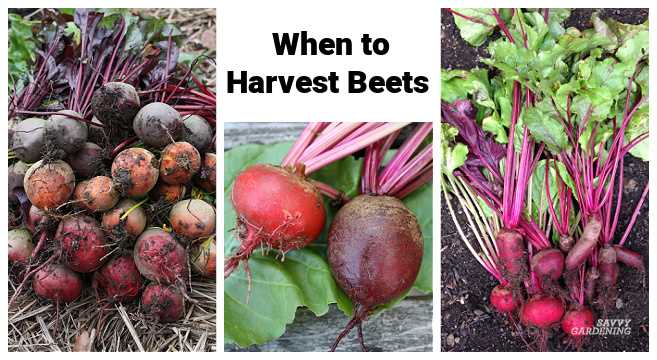
After harvesting, remove the greens from the beets, leaving about an inch of stem attached. Store the beets in a cool, dark place, such as a root cellar or refrigerator, to prolong their freshness.
By following these tips, you can ensure that you harvest your beetroot at the optimal time, resulting in delicious and flavorful beets for your culinary creations.
“Question-Answer”
Why is a two-week head start important for beetroot harvesting?
A two-week head start is important for beetroot harvesting because it allows farmers to have an early harvest and provides them with a competitive advantage in the market. It also ensures that the beetroots are at their peak freshness and quality when they are harvested.
What is the proven method to achieve a two-week head start on beetroot harvesting?
The proven method to achieve a two-week head start on beetroot harvesting is through the use of raised beds and black plastic mulch. The raised beds create warmer soil temperatures, which promotes faster growth and development of the beetroots. The black plastic mulch helps in retaining heat and moisture, further enhancing the growth of the beetroots.
Can any type of soil be used for beetroot cultivation using this method?
Yes, this method of beetroot cultivation can be used with any type of soil. The raised beds and black plastic mulch help in improving soil temperature and moisture levels, which are beneficial for beetroot growth in any type of soil.
How does raised beds and black plastic mulch help in achieving a two-week head start on beetroot harvesting?
Raised beds help in creating warmer soil temperatures, which promote faster growth and development of the beetroots. The black plastic mulch helps in retaining heat and moisture in the soil, further enhancing the growth of the beetroots. These factors combined help in achieving a two-week head start on beetroot harvesting.
Are there any other benefits of using raised beds and black plastic mulch for beetroot cultivation?
Yes, apart from achieving a two-week head start on beetroot harvesting, using raised beds and black plastic mulch also helps in weed suppression, moisture retention, and improved soil structure. It also reduces the risk of diseases and pests, leading to healthier beetroot plants.
Is the two-week head start method suitable for commercial beetroot farming?
Yes, the two-week head start method is suitable for commercial beetroot farming. It provides farmers with an early harvest, giving them a competitive advantage in the market. The use of raised beds and black plastic mulch also aids in larger and healthier yields, which is beneficial for commercial farming.







